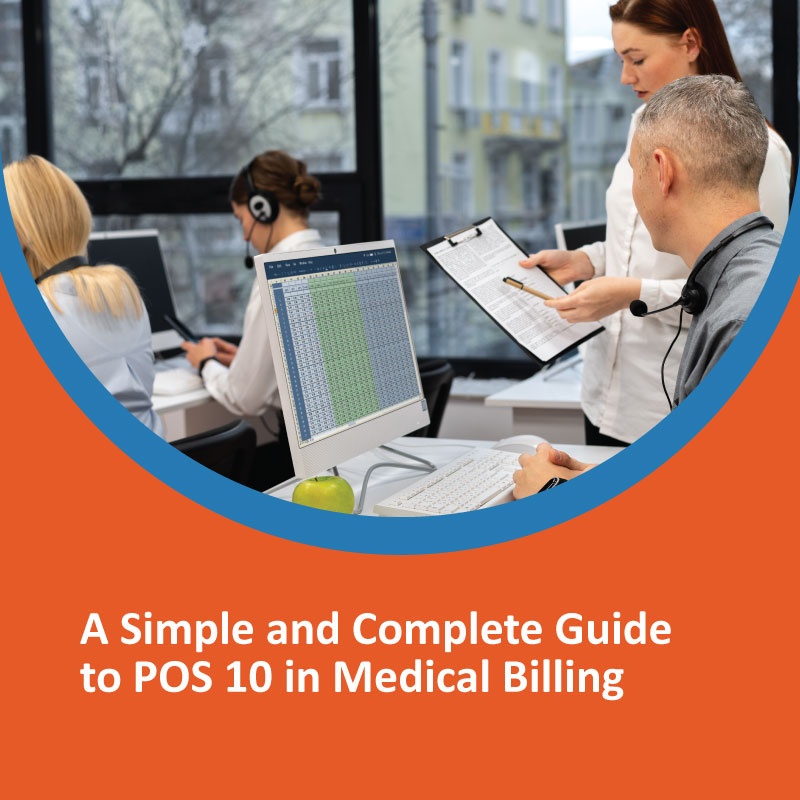There are a lot of codes like POS 10 in medical billing, and rules in medical billing that might make it hard to understand. If you work in healthcare, or even if you’re a patient trying to figure out your insurance, knowing what these numbers mean can help. Place of Service (POS) codes are a critical set of codes used in billing. Insurance companies can see where a patient was when they got care due to these codes. It may seem easy, but using the right POS code can change whether a claim is approved, how much a provider gets paid, or if the bill is denied.
POS 10 is one of the latest codes in this system. It is all about telehealth visits that occur when the patient is at home. Billing systems have to keep up as virtual care becomes more frequent, especially after the pandemic. POS 10 was made to give a better idea of how and where care is given. We’ll explain what POS 10 is, why it’s essential, and how to use it appropriately in this article. This article will help you understand how healthcare billing works, whether you are a provider, a billing specialist, or just someone who is interested.
What is pos 10 in medical billing?
POS 10 refers to the fact that the patient received a telehealth service from home. They could talk to their doctor, nurse, or therapist through a phone call or video call. POS 10 shows the visit happened while the patient was at home. It tells the insurance company that the care was not given at a clinic or hospital.
This code was created in 2022 by CMS. The goal was to make it easier to tell the difference between home-based telehealth and other remote visits.
What Was the Purpose of POS 10?
Before POS 10, POS 02 was used to bill for most telehealth visits. But this coding didn’t make it obvious where the patient was. Some people were at home, and others were at a clinic talking to a doctor over video.
Most people now use telehealth from home. So, there needed to be a better way to track and pay for these visits.
That’s why POS 10 was made for telehealth when the patient is at home. It helps doctors get paid the right amount. It also allows insurance companies to understand how care is being provided.
How to Correctly Use POS 10
Here’s how to use POS 10 the right way so your claim is not delayed or denied:
- Ask the patient: If they are at home during the visit, use POS 10.
- Use the proper Billing codes: Pick the correct CPT or HCPCS codes for telehealth services like video visits, therapy, or follow-ups.
- Add a modifier: Some insurance plans ask you to add a code like 95 or GT to show it was a virtual visit.
- Check the rules for payers: It is always a good idea to double-check because different insurance providers may have different rules.
Why POS 10 is Essential:
Using the right POS code like POS 21 and other, is more than just a step in the Billing process. It can also help with:
- Fewer mistakes on bills or claims being turned down
- Better tracking of telehealth use info
- Following the rules set by the government and payers
Also, many payers pay differently depending on whether the patient is at home or in a facility.
Using POS 10 makes sure you are billing at the right rate.
Common Mistakes to Avoid
Things You Shouldn’t Do When:
- Using POS 02 for Home Visits: This could mean that claims are denied or compensation is decreased.
- Not remembering modifiers: Some payers still want a telehealth modification with POS 10.
- Not checking where the patient is: Always ask the patient where they are before the visit starts.
Conclusion:
POS 10 can look like just another number, but it is vital for billing in today’s healthcare system. It shows that a patient had telehealth services from home. It helps insurance companies understand how treatment is given. Healthcare providers can save from billing problems. They make sure that they get paid correctly by using POS 10 correctly. It also helps encourage the rise of telemedicine, which is easier for patients and frequently better for clinicians. As telemedicine grows, adopting the correct codes, like POS 10, will help make billing fair, legal, and simple for everyone.
Questions About POS 10
1. What does POS 10 mean?
POS 10 indicates that the patient saw a doctor over telehealth while they were at home.
2. Is it possible to use POS 10 for phone visits?
Yes, as long as the service and payer accept audio-only telehealth and the patient is at home.
3. What is the difference between POS 10 and POS 02?
POS 10 is for telemedicine when the patient is at home. When the patient isn’t at home, POS 02 is for telemedicine.
4. Does using POS 10 change how much you have to pay?
Yes. Some insurance companies pay more or less depending on the POS code, so using the right one helps you get the right amount.
5. Does every insurance company accept POS 10?
POS 10 is accepted by most major insurance companies, including Medicare. But it’s always a good idea to look over the restrictions for each plan.


